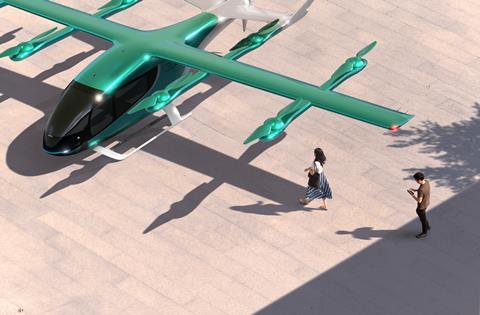US air taxi developer Eve Air Mobility doubled its research and development spending in 2023, compared with the previous year.
Such spending reached $106 million for the full year, compared with $51.9 million spent on research and development in 2022, Eve revealed in its quarterly earnings report on 7 March.
Florida-based Eve reports losing $128 million for the full year – including a $39 million loss in the fourth quarter alone – compared with a $174 million loss in the 12 months ending 31 December 2022.
“The increase in recurring net losses in the quarter was mostly driven by higher research and development expenses, which are costs and activities necessary to advance in the development of our suite of products and solutions” for urban air mobility, Eve says.

The company anticipates burning cash at a similar rate in 2024. “With intensifying programme development efforts, continued supplier selection, assembly of our prototypes and necessary investments to the production site, Eve expects a total cash consumption between $130 and $170 million in 2024,” Eve says.
The Embraer-backed company’s cash position diminished, year on year. Eve reported holding $240 million of cash and equivalents at the end of 2023, compared with $311 million on 31 December 2022
“We are confident that our current liquidity is sufficient to fund our operations, design and certification efforts through 2025,” Eve says.
Eve is currently assembling a pre-production prototype of its electric vertical take-off and landing (eVTOL) aircraft, which will have a 15.2m (50ft) wingspan.
The prototype will be remotely operated, serving as a test bed that will allow Eve to evaluate flight and sound characteristics on a full-scale aircraft.
The aircraft’s composite wing is nearly complete, Eve says on 7 March. It is assembling separately the empenage to “house the dual in-line electric motor for the pusher” propeller, which will be used in cruise phases of flight, the company says.
“All the aircraft propellers – for the pusher and eight rotors – were designed to maximise the thrust/energy requirement equation, while also reducing sound emissions,” Eve says.
The company hopes to launch a flight-test campaign this year, and begin building five conforming aircraft for certification flying. It plans to pursue type certification first with Brazil’s civil aviation regulator, ANAC.
Meanwhile, Eve is beginning to develop its production facility in Taubate, Brazil, which the company claims will eventually be capable of manufacturing hundreds of aircraft.































